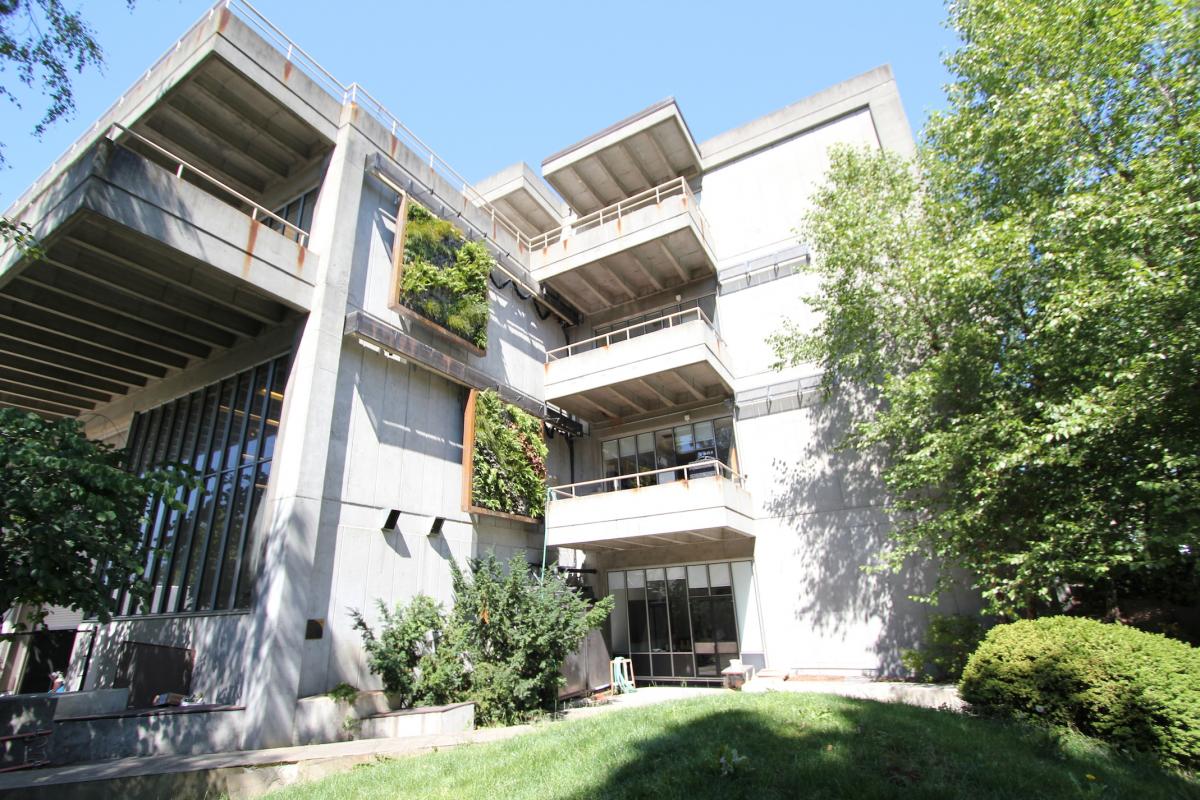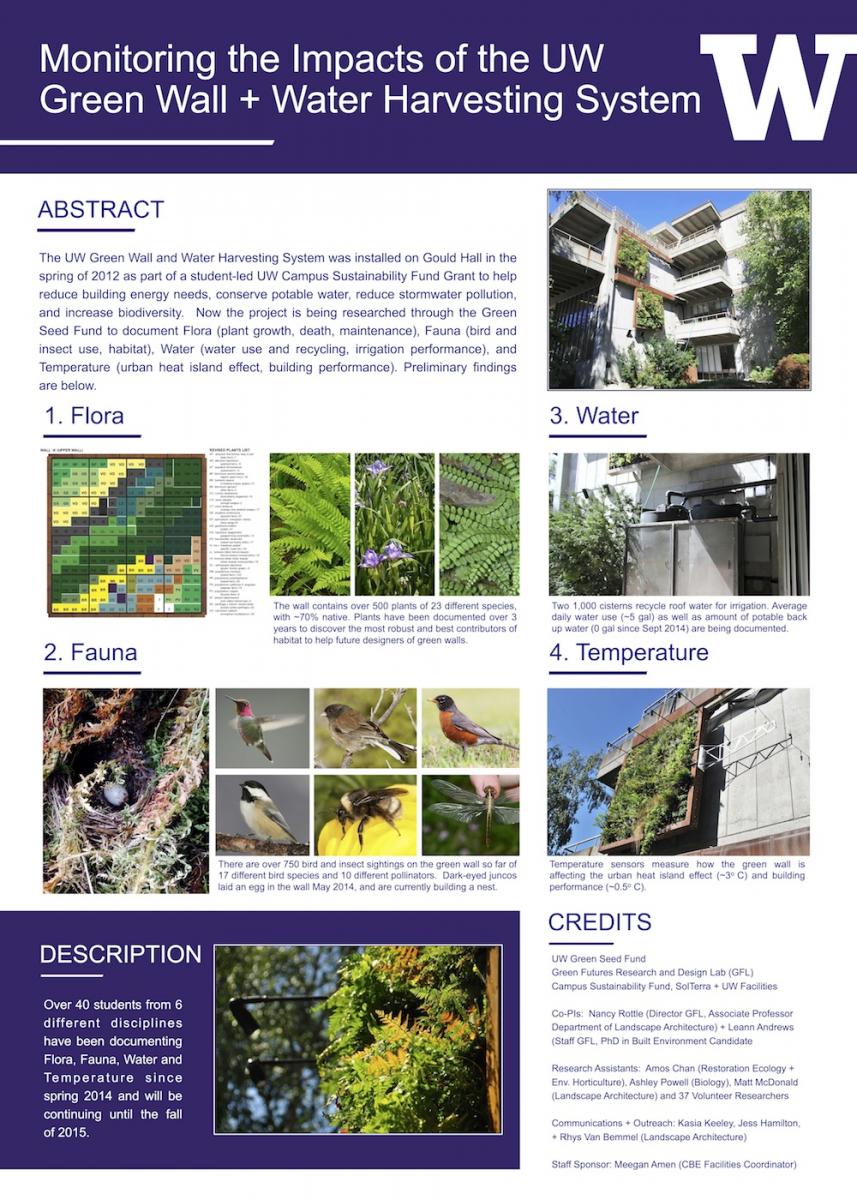
On the southeast side of Gould Hall, the UW Green Wall project perches, providing a home for plants, birds and insects while helping to conserve water and reduce energy needs.
A team funded by a Green Seed Fund grant is studying the Green Wall to quantify the effects of the green wall. The research is documenting plant growth, bird and insect sightings, water use, the impact on the urban heat island effect and building energy performance.
Over a year period, researchers sighted more than 17 different species of birds and multiple species of insects using the wall, which includes more than 500 plants of 23 different species - most of which are native to the Northwest. The Green Wall also features two 1,000-gallon cisterns, which recycles roof water for irrigation purposes. Since fall 2014, the stored water has fully covered the wall's irrigation needs, as no potable back-up water has been needed.
The researchers have also observed that while the wall doesn’t seem to change total heat absorbed and released throughout time, it rather shifts the heat flows, by acting as a heat sink during the day and a heat source at night.
The project is continuing through 2015, with full project results expected in early 2016.
Green Seed Projects which were funded in the 2013-2014 year recently presented their research findings to the Environmental Stewardship Committee. This is part of a series of posts detailing the projects, including posters each team created on their findings. Click the poster image below for a full-size PDF.
